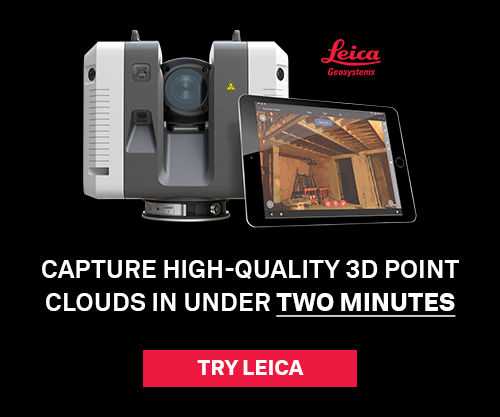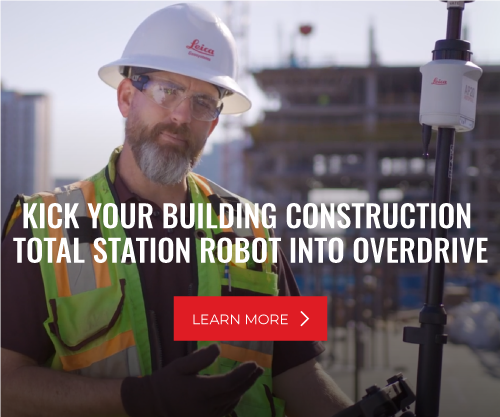A 3D design model, when used in combined with automated machine control, can guide an asphalt or concrete paver, curb and gutter machine, or milling machine with millimeter accuracy. But until recently use in the U.S. has been primarily limited to airport runways and concrete paving jobs with rigid pavement specifications.
Times are changing. State Departments of Transportation and the Federal Highway Administration have become more interested in utilizing advanced paving technologies to reduce costs and improve quality. It’s widely recognized that smooth pavements last longer, so some DOTs are rewriting specifications to require lower International Roughness Index (IRI) percentages, while others are incentivizing smoothness with bonuses for IRI percentage improvements.
There’s a real opportunity to gain a competitive edge by utilizing 3D paving.
1. Ditch the tedious tasks associated with stringline paving
With 3D paving technology, you can eliminate costly and time-consuming tasks associated with traditional stringline methods such as setting pins, taking elevation shots for each cut and writing the cut or fill to final grade on the stake. And when you are not waiting on a surveyor to set or remove stringlines, you can accelerate your project timeline.
How much can you save? Leica Geosystems distributor Flores Automation & Machine Control (FAMC) estimates the cost for these tasks at $1 per linear foot. That means an 11-mile stretch of four-lane highway would result in labor savings of nearly $700,000. With savings like this, it won’t take long to recoup your investment. Rental options make 3D systems accessible without a big capital outlay.
RELATED: Check your potential savings on the ROI calculator >
2. Save on material costs
With 3D paving, you can be confident in the quantity of materials used. In a 3D model the width and depth of the pavement at every point is known. So you don’t have to include overrun when making your bid. With less waste and tighter control over material costs, you’ll win more bids and keep your margins where you want them.
3. Deliver smoother pavements with leapfrogging and smart spare
Anytime a paver stops, it results in a bump in the road. Technologies that enable continuous operation will result in higher quality pavement.
One example is the auto leapfrogging feature in Leica Geosystems 3D machine control. This feature enables continuous paving even when the line of sight is blocked or if the distance from the total station to the prism is more than 300 feet. In leapfrogging, a smart spare total station is placed approximately two blocks ahead of the paving operation. If an object interferes with the line of sight, the measurement of a machine prism will instantly transfer to the other total station.
Unlike other 3D paving systems, the Leica system requires no operator adjustments. This ensures a continuous paving operation without a stop in laying the concrete or asphalt mix.
4. Take advantage of cost-effective setup options
3D paving solutions are typically operated with total stations only or dual GNSS only. A configuration that combines a total station and prism with a dual GNSS system can reduce equipment costs because it requires only one total station, one prism and a dual GNSS for the elevation, slope and steering of the machine.
As of this writing, there is only one patented system like this available in the industry – the Leica 1UP setup. Leica’s unique GNSS feature gives a heading without the need for RTK corrections and simplifies installation with one multipoint radio. In addition to using a one-up configuration for paving highways and runways with stringent ride-quality specs, it can also be used on curb and gutter machines and to create barrier walls on the highway or irrigation canals.
5. Improve pavement quality and reduce material costs with differential milling
Most pavements today are rehabilitated by milling some or all of the surface of a paved area to create a foundation for new pavement. It’s essential to the success of a resurfacing project to get milling right because the quality of the surface impacts the final pavement.
Conventional milling operations rely on a surveyor to mark the pavement in a time-consuming process. Marks can be washed away by rain and can be difficult for operators to see. Machine operators can easily take away too much asphalt, which means the area will need to be overfilled and the project will be more expensive than it should be. Also, when a surface is milled to a set depth, such as 3 inches, road imperfections such as waves, will simply be copied in the final surface. If not enough of a surface is removed, new surface layers may be of poor quality.
Differential milling solutions significantly improve upon this error-prone process and can dramatically improve pavement quality for government agencies. For example, the Leica iCON site milling pilot application uses positioning data from a GNSS receiver on the machine to calculate the difference between the existing and the design surface as the cold planner moves over the area that is being milled. The automated differential milling pilot takes away the need to enter the milling values manually.
For even greater accuracy Leica offers the profile milling solution, which works off a total station rather than GPS.
The time is right for 3D paving technology
Controlling costs and improving quality are essential to compete in today’s paving market. 3D technology helps achieve both. Fortunately, the technology has never been easier to use. The screens are bigger and brighter and the tasks are more intuitive.
Whether you rent or purchase, mastering 3D paving technology will help you gain an edge.
Contact your Leica dealer to explore the best paving solutions for your business.





